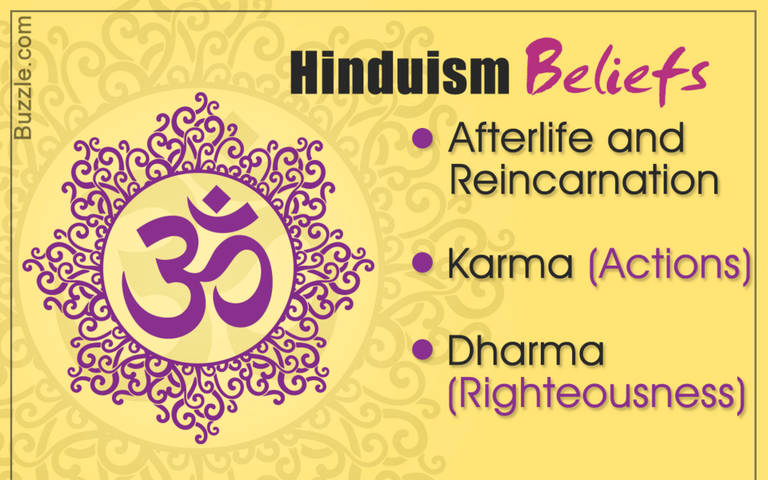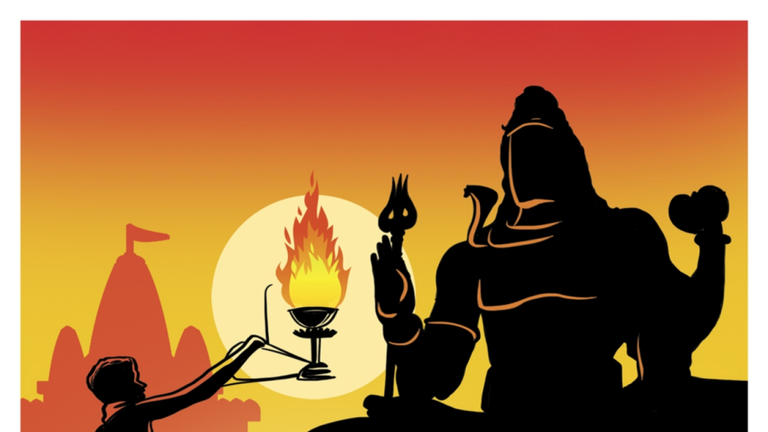Hinduism's initial history is the subject of much civil argument for various reasons.
Right off the bat, in a strict sense there was no 'Hinduism' before current circumstances, in spite of the fact that the wellsprings of Hindu conventions are exceptionally antiquated.
Furthermore, Hinduism is anything but a solitary religion yet grasps numerous customs.
Thirdly, Hinduism has no clear beginning stage. The conventions which stream into Hinduism may return a few thousand years and a few experts assert that the Hindu disclosure is unceasing.
In spite of the fact that there is an accentuation on individual otherworldliness, Hinduism's history is firmly connected with social and political improvements, for example, the ascent and fall of various kingdoms and realms. The early history of Hinduism is hard to date and Hindus themselves have a tendency to be more worried about the substance of a story or content instead of its date.
Hindu thoughts of time
Hindus by and large trust that time is repeating, much like the four seasons, and everlasting instead of straight and limited. Writings allude to progressive ages (yuga), assigned individually as brilliant, silver, copper and iron.
Amid the brilliant age individuals were devout and clung to dharma (law, obligation, truth) yet its capacity decreases after some time until the point that it must be revitalized through heavenly intercession.
With each progressive age, great characteristics reduce, until the point that we achieve the present iron or dim age (kali yuga) set apart by pitilessness, bad faith, realism et cetera. Such thoughts challenge the broad, straight view that people are definitely advancing.
Principle authentic periods
In spite of the fact that the early history of Hinduism is hard to date with assurance, the accompanying rundown displays a harsh sequence.
Before 2000 BCE: The Indus Valley Civilisation
1500– 500 BCE: The Vedic Period
500 BCE– 500 CE: The Epic, Puranic and Classical Age
500 CE– 1500 CE: Medieval Period
1500– 1757 CE: Pre-Modern Period
1757– 1947 CE: British Period
1947 CE– the present: Independent India
Indus Valley Civilisation
The Indus Valley Civilisation (before 2000 BCE)
Satellite picture of Indus stream bowl with present day global limits denoted The Indus bowl
The Indus Valley civilisation was situated in the bowl of the stream Indus, which moves through present day Pakistan. It had created by around 2500 BCE despite the fact that its birthplaces reach back to the Neolithic time frame. It had blurred away by 1500 BCE.
The Indus Valley was a created urban culture much the same as the civilisations of Mesopotamia. Two noteworthy urban areas have been revealed, Mohenjo-Daro and Harappa, which has given us the elective name of Harappan culture. These urban areas housed around 40,000 individuals who appreciated a significant elevated requirement of living with advanced water frameworks; most houses having waste frameworks, wells, and garbage chutes. Grain was the premise of the economy and extensive grain stores gathered grain as expense.
The civilisation was broad, from the eastern lower regions of the Himalayas, to Lothar on the Gujarat drift, and to Sutgagen Dor close to the Iranian fringe. A few urban communities of the Indus valley culture presently can't seem to be unearthed.
The Indus civilisation did not create because of contact with different civilisations, for example, Sumer or Egypt yet was an indigenous improvement becoming out of prior, nearby societies.
Religion in the Indus valley
We know little of the religion, social structure or legislative issues of this early civilisation and we don't have the foggiest idea about the dialect, yet seals have been found with what resembles a content recorded on them. This has not been deciphered effectively and a few researchers currently question whether it is in truth a content, in spite of the fact that this is combative.
Unique, delicately bending cutting of situated male middle and arms, the take severed Male figure found at Mohenjo-Daro. Photograph: Amir Taj
Religion in the Indus valley appears to have included sanctuary ceremonies and custom showering in the 'immense shower' found at Mohenjo-Daro. There is some proof of creature forfeit at Kalibangan. Various earthenware dolls have been found, maybe goddess pictures, and a seal delineating a situated figure encompassed by creatures that a few researchers thought to be a model of the god Shiva. Others have questioned this, bringing up that it looks somewhat like Elamite seals portraying situated bulls. One picture, cut on soapstone (steatite), delineates a figure doing combating with lions which is reminiscent of the Mesopotamian Gilgamesh fantasy.
There might be coherencies between the Indus Valley civilisation and later Hinduism as recommended by the evident accentuation on custom showering, forfeit, and goddess love. Be that as it may, custom immaculateness, forfeit and an accentuation on fruitfulness are normal to other antiquated religions.
Vedic Period
The Vedic Period (c.1500– c.500 BCE)
There have been two noteworthy hypotheses about the early improvement of early south Asian conventions.
The social change theory that Aryan culture is an advancement of the Indus Valley culture. On this view there were no Aryan relocations (or attack) and the Indus valley culture was an Aryan or vedic culture.
There are two wellsprings of learning about this antiquated period - dialect and archaic exploration - and we can make two remarks about them. Initially, the dialect of vedic culture was vedic Sanskrit, which is identified with different dialects in the Indo-European dialect gathering. This proposes Indo-European speakers had a typical phonetic starting point referred to by researchers as Proto-Indo-European.
Sanskrit original copy Page of the Rig Veda in Sanskrit: mid nineteenth century Indian composition ©
Besides, there seems to be archeological coherence in the subcontinent from the Neolithic time frame. The historical backdrop of this period is along these lines complex. One of the key issues is that no steed remains have been found in the Indus Valley yet in the Veda the steed forfeit is focal. The open deliberation is progressing.
Vedic religion
On the off chance that we take 'Vedic Period' to allude to the period when the Vedas were made, we can state that early vedic religion revolved around the forfeit and imparting the conciliatory feast to each other and with the numerous divine beings (devas). The term 'forfeit' (homa, yajna) isn't limited to offering creatures yet alludes all the more generally to any offering into the consecrated fire, (for example, drain and elucidated margarine).
A portion of the vedic customs were extremely intricate and proceed to the present day. Forfeit was offered to various vedic divine beings (devas) who lived in various domains of a progressive universe isolated into three wide domains: earth, environment and sky.
Earth contains the plant god Soma, the fire god Agni, and the divine force of religious power, Brhaspati. The Atmosphere contains the warrior Indra, the breeze Vayu, the tempest divine beings or Maruts and the horrendous Rudra. The Sky contains the sky god Dyaus (from an indistinguishable root from Zeus), the Lord of astronomical law (or rta) Varuna, his companion the divine force of night Mitra, the nourisher Pushan, and the pervader Vishnu.



thats the background of indian religion. nice information
thanks for your appreciation
Congratulations @cgastra! You have completed the following achievement on Steemit and have been rewarded with new badge(s) :
Click on the badge to view your Board of Honor.
If you no longer want to receive notifications, reply to this comment with the word
STOPTo support your work, I also upvoted your post!
Do not miss the last post from @steemitboard:
SteemitBoard World Cup Contest - Play-off for third result
Participate in the SteemitBoard World Cup Contest!
Collect World Cup badges and win free SBD
Support the Gold Sponsors of the contest: @good-karma and @lukestokes
Where have you collected all this info. Fab effort. Your #post are very interesting, so i wait for them. Your contents are adding great value to #steemit blogging.
Thanks alot .. I do only because of your love and support
Great post
Thanks for.your appreciation
All People should know about our culture.
Great Try...
Amazing Article..
Indian culture is the best
Excellent article. Beautiful insect
Thanks for your appreciation
welcome follow u
me too